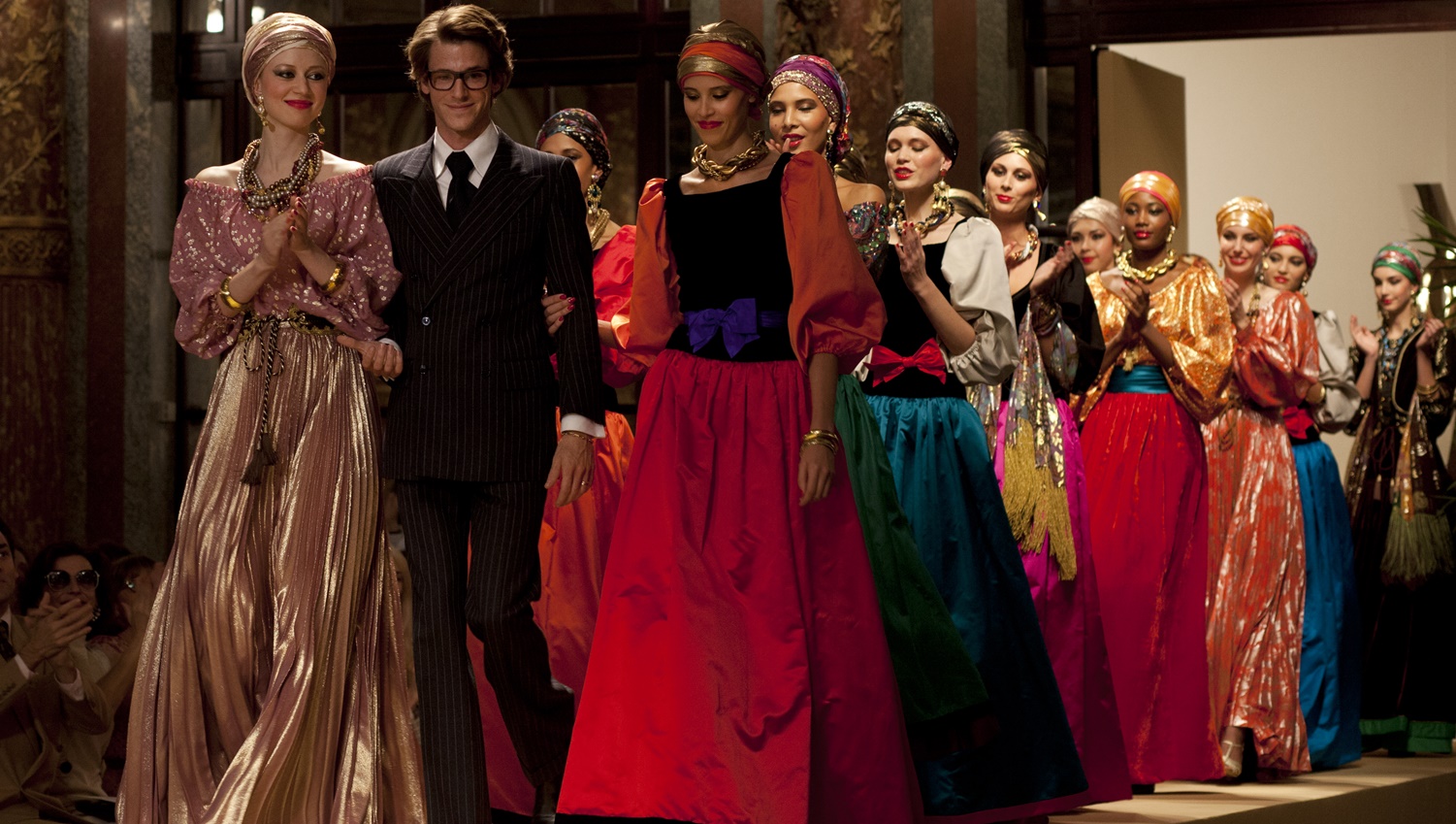
Saint Laurent
Dustin Chase
Yves Saint Laurent was both saint and a little devil, according to this biopic by co-writer/director Bertrand Bonello (written with Thomas Bidegain). In his early life, he seemed to be rather sweet and had a loving, playful relationship with his mother. He began designing clothes for dolls at a young age, and clearly showed a taste for art and the finer things in life. In young adulthood, his mother observed to him what a charmed life he had; yet he didn’t seem to value it. All those qualities perhaps made him vulnerable to enticements that would eventually be his undoing. However, he was hospitalized for emotional difficulties during brief military service, and given large quantities of medicine and electroshock therapy. He seemed to think that was the root of his later problems with alcohol and drugs.
Saint Laurent was imminently successful in designing clothes for women, and advanced the profession in offering tuxedos for women and ready-to-wear apparel. He revered Dior, who became his mentor, and eventually named him as his successor at the House of Dior, which he ascended to at age 21 because of Dior’s early death. With his astute business partner and lover, Pierre Bergé (Remier), Yves eventually saved that business from financial ruin. Yves went on to become one of the most famous fashion designers in the world, and the YSL brand (perfume and household items as well as Haute Couture) that he and Pierre created is still very popular today.
Captures so artfully the many moods and adventures of the designer.
The film is a no-holds-barred look at Saint Laurent’s life—his passion for the art of design; his loves, flirtations, and friendships; his generosity and graciousness; and his sorrows and personality quirks. Most of it is fascinating, yet it is overly long (2½ hours), and at times lacks focus. Scenes are included that seem to have no explanation, such as one in which a naked woman and one who is clothed are in the street and a man seems to be filming them and their conversation, but we don’t know who the women are or who is filming them. Director Bonello should have maintained better focus and cut enough scenes to shorten the film by ½ hour to 45 minutes.
Cinematographer Josee Deshaies was nominated for a Cesar for this film, but I found his work to be frustrating; designer clothes whip by so fast one can’t really see them, and there are many scenes that begin with showing only the feet and legs of characters; other times the camera switches among scenes of models’ heads, their lower body parts, and what they’re wearing. I’ve actually noticed these techniques in several films recently—along with the use of split scenes with up to 10 or 12 images—and wonder why they’re so popular. Perhaps it’s a fad that will hopefully go away before long.
A strong point is the acting of Gaspard Ulliel (Saint Laurent during his designer years), who captures so artfully the many moods and adventures of the designer, and that of Lea Leydoux, who plays a constant female companion and emotional support during the same period.
Another strong point is showing how Yve’s business manager, Pierre Bergé played such a crucial role in managing the designer’s affairs, even after he felt betrayed. The film takes a very neutral position between the two men around the affair. It could be that Bergé saved Saint Laurent, or was actually the cause of inconsolable grief that was damaging.
Final Thought
The life of a successful designer—ooo la la.
